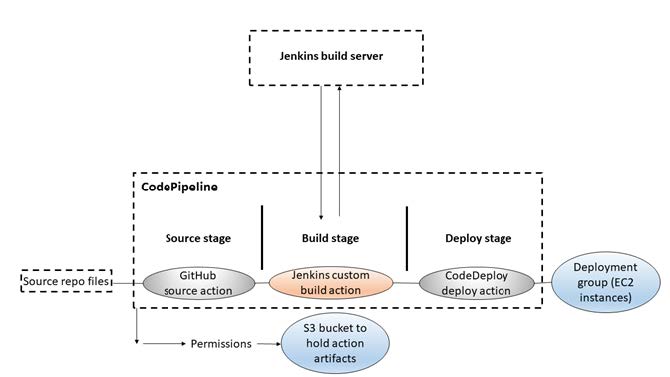Building a Serverless CI/CD Pipeline on AWS: A Step-by-Step Guide
Continuous Integration and Continuous Deployment (CI/CD) are essential practices in modern software development, enabling faster and more reliable delivery of applications. In this article, we’ll explore the implementation of a serverless CI/CD pipeline using AWS services such as CodePipeline, CodeBuild, and Lambda.

In the dynamic world of software development, efficient CI/CD processes are crucial. Serverless architecture, with its scalability and cost-effectiveness, has become increasingly popular. Combining serverless principles with AWS services creates a powerful environment for building and deploying applications.
AWS Services Overview
AWS CodePipeline
AWS CodePipeline orchestrates your CI/CD workflow, automating the build, test, and deployment phases. It offers a visual representation of your pipeline with configurable stages.

AWS CodeBuild
AWS CodeBuild is a fully managed build service that compiles source code, runs tests, and produces ready-to-deploy artifacts. It integrates seamlessly with CodePipeline, allowing you to create custom build environments using Docker containers.

AWS Lambda
AWS Lambda lets you run code without provisioning or managing servers. In the context of CI/CD, Lambda functions can be used for serverless deployment, adding flexibility and speed to your release process.
- Web Applications

- Mobile Applications

Architecture Design
High-Level Architecture
The serverless CI/CD pipeline on AWS involves the integration of CodePipeline, CodeBuild, and Lambda. The diagram below illustrates how these services work together to automate the entire process.

Pipeline Configuration
Let’s dive into the configuration of a typical pipeline. The pipeline consists of stages for source, build, and deployment.

Build Environment Setup
Configuring CodeBuild involves specifying build environments, buildspec files, and any custom settings needed for your specific project.

Serverless Deployment with AWS Lambda
Lambda functions are integrated into the deployment stage, ensuring that your application is deployed in a serverless manner.

Implementation Steps
Setting Up CodePipeline
- Create a new CodePipeline project.
- Configure the source (e.g., AWS CodeCommit, GitHub) and destination (e.g., AWS Lambda).
Configuring CodeBuild
- Set up a build project in AWS CodeBuild.
- Configure build environments and artifacts as per your project requirements.
Integrating AWS Lambda
- Create Lambda functions for deployment.
- Configure CodePipeline to deploy Lambda functions.
Best Practices and Optimization
Security Considerations
Implement secure coding practices and employ role-based access control for CodePipeline and CodeBuild.
Optimizing Build Performance
Explore caching strategies in CodeBuild and parallelize build tasks for faster builds.
Monitoring and Logging
Set up CloudWatch Logs for CodePipeline and CodeBuild. Monitor pipeline execution and build logs for insights into your CI/CD workflow.
Conclusion
In this guide, we’ve explored the implementation of a serverless CI/CD pipeline using AWS CodePipeline, CodeBuild, and Lambda. By leveraging these serverless services, you can achieve faster, more efficient application delivery.
Next Steps
Consider further enhancements or features for your CI/CD pipeline. AWS offers a plethora of services that can be integrated to meet specific project requirements. Dive deeper into AWS documentation and explore additional services.
Resources
Happy coding!
Harrish Murugesan
Author
